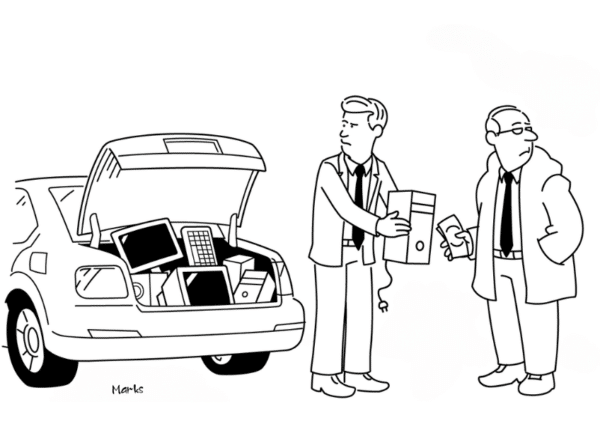Toxic IT Assets (And How to Eliminate Them)
Toxic assets earned their name during the 2008 financial crisis when the housing bubble burst, causing a collapse of the mortgage-backed securities market.
When mortgage-backed securities became impossible to sell, these assets turned ‘toxic’ into liabilities that threatened the banks’ solvency that owned them.
Some banks were deemed “Too Big to Fail.” The government stepped in to bail out the lucky ones. The less fortunate institutions went bankrupt.
Today, there is another type of toxic asset threatening large organizations. But unlike credit default swaps and collateralized debt obligations, organizations found to be holding (or hiding) these assets should not expect a bailout.
Instead, regulators and privacy lawyers are ready to make them pay.
What Are Toxic IT Assets?
Organizations constantly replace outdated computers, servers, laptops, and other electronic devices. IT asset disposition (ITAD) is the process of responsibly disposing of this unwanted electronic equipment.
The keyword here: responsibly.
Unwanted IT assets become toxic when they go missing. This is usually due to loss or theft. However, the most common culprit is apathy. Companies that fail to make ITAD a priority put themselves at the greatest risk of losing valuable assets.
Why They’re a Security Risk
Even the most insignificant piece of equipment can contain sensitive data. When these assets fall into the wrong hands, legal and financial repercussions are sure to follow.
Case in point: Morgan Stanley’s recent slipup involving toxic IT assets cost them $60 million in fines and numerous class-action lawsuits to deal with.
And this time, no government bailout is on its way to save them.
How Disposal Tags Keep Assets Safe
Establishing clear chain of custody protocols is the most effective way to protect your organization from toxic assets.
However, most companies track retired equipment solely by cataloging their serial numbers. This haphazard process creates gaps in an asset’s chain of custody and leaves IT managers unable to account for nearly 50% of their disposed inventory.
Today’s organizations need a streamlined way of tracking assets through the entire disposal process. That’s where disposal tags come in.
Disposal tags help eliminate risks by:
- Increasing tracking accuracy from barely 50% to nearly 100%.
- Deterring theft by reminding employees and vendors that each piece of equipment must be accounted for.
- Significantly reducing the risk of financial liability in the event of a lawsuit by establishing a clear chain of custody.
Best of all, disposal tags allow you to do all this without changing vendors or disrupting your existing methods.
Contact Retire-IT to Get Started with Tags Today
ITAD often takes a backseat to other company operations. That is understandable. After all, most businesses don’t have the resources to track down lost assets, and busy executives don’t have the bandwidth to deal with the extra headache.
That’s why we started Retire-IT with one goal in mind: making ITAD effective and simple.
No matter the size of your organization, we provide vendor-neutral solutions that help remove the challenges of IT Asset Disposition (ITAD), including disposal tag tracking and TPV.
Ready to get started? Contact us today to learn more.













